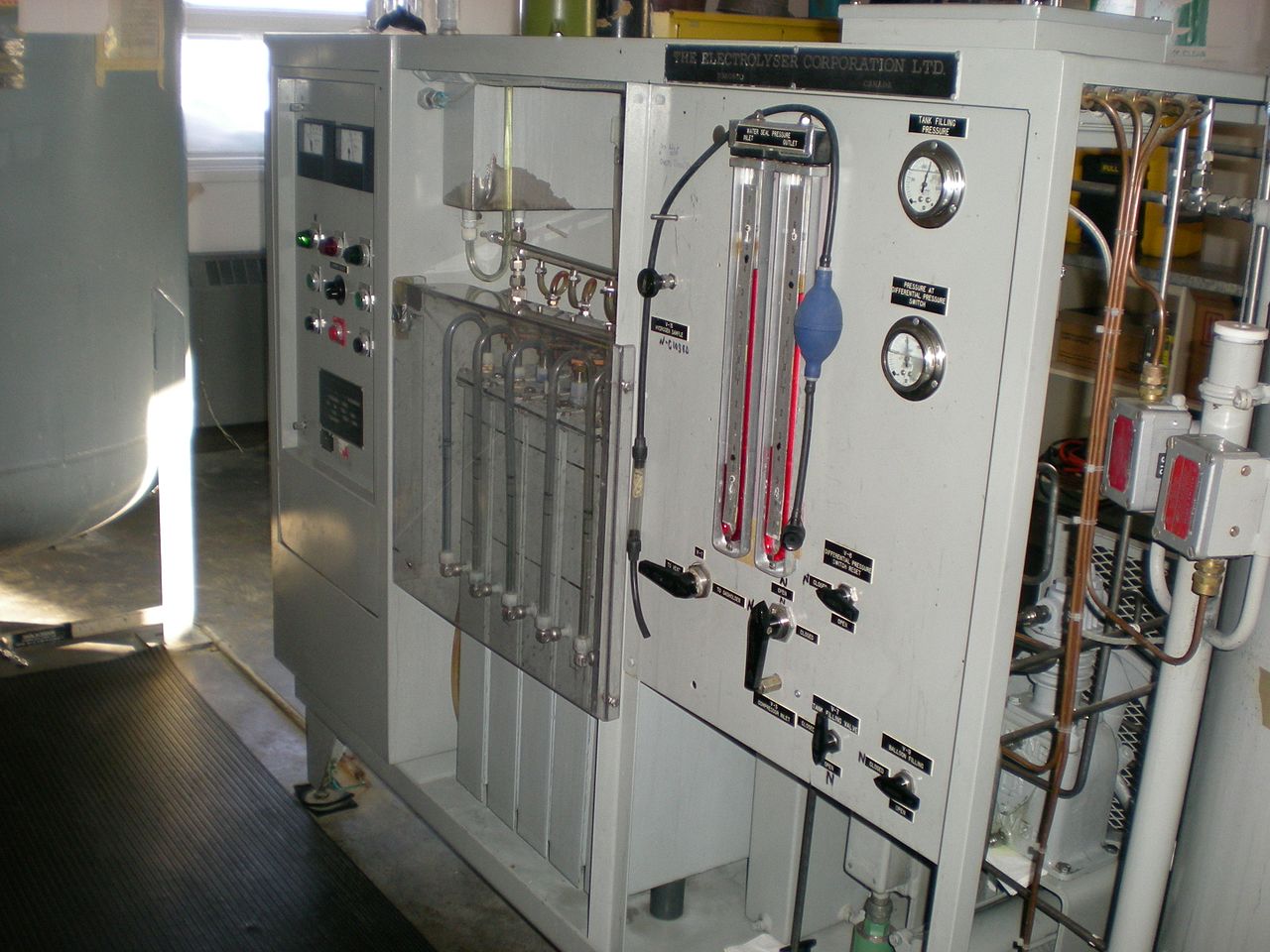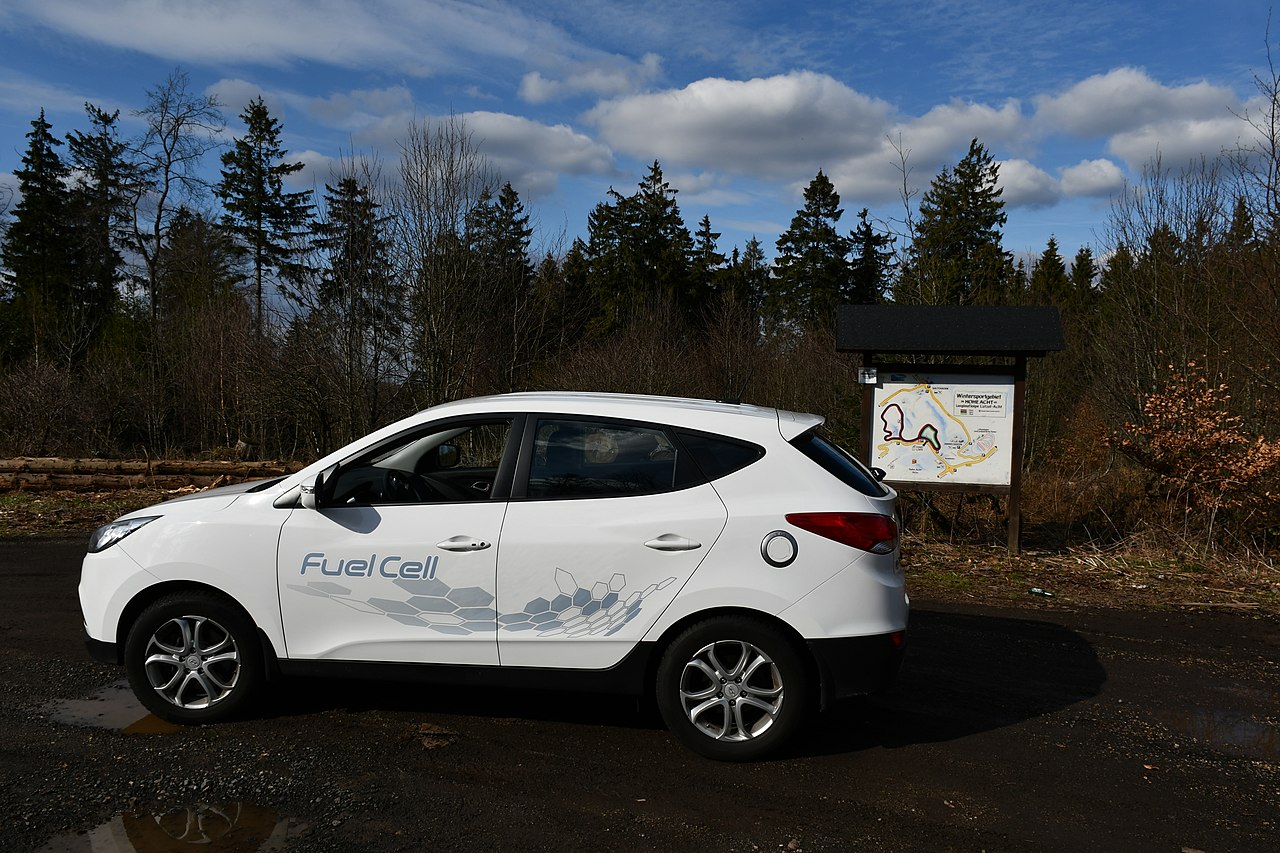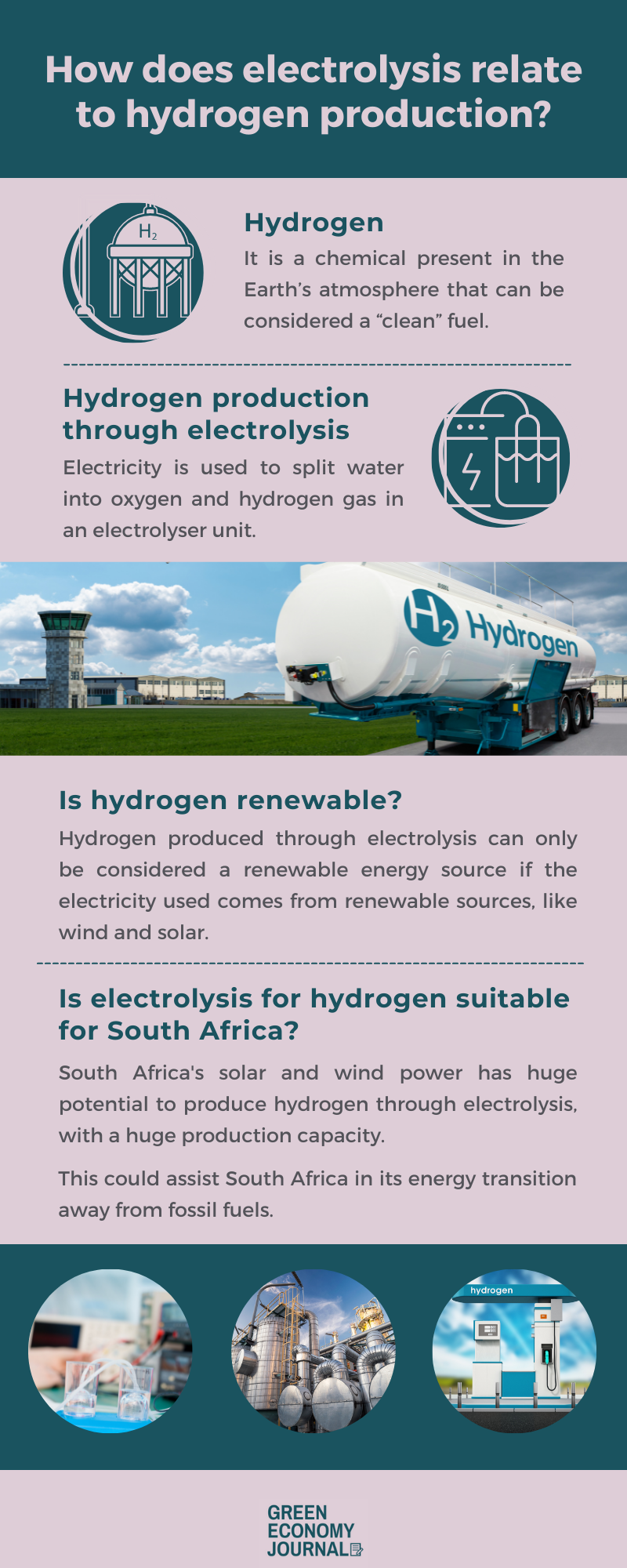Hydrogen production: Using electrolysis for energy
Hydrogen is a chemical present in the Earth’s atmosphere that can be harnessed as a fuel. It is considered a “clean” fuel, as when it is used in fuel cells, the only byproduct is water. Hydrogen can be used in various ways, including as a fuel for transport and for electricity generation.
Hydrogen gas can also be produced in several ways. It is most commonly produced through natural gas reforming. This process releases a lot of carbon dioxide into the atmosphere. On the other hand, green hydrogen is produced without using any fossil fuels.
Hydrogen production through electrolysis
Hydrogen can also be produced through electrolysis. This is where electricity is used to split water into oxygen and hydrogen gas in an electrolyser unit. This process can be carbon-free, making it an attractive renewable energy option.
Electrolysis works by breaking or making the chemical bonds between atoms. It involves converting electrical energy to chemical energy. Despite its potential for producing renewable energy, it is not without its challenges. For example, using pure water for hydrolysis slows down the process and produces only small amounts of hydrogen and oxygen. This can be addressed by adding acid or some chemical salts.

How electrolysis produces green hydrogen
Electrolysis has no greenhouse gas emissions. However, hydrogen produced through electrolysis can only be considered a renewable energy source if the electricity used comes from renewable sources, like wind or solar.
Since many electricity grids, including South Africa’s, are mainly powered through fossil fuels, hydrogen produced through electrolysis, using energy from the grid, would probably not be considered renewable.
Renewable electrical energy
If electrolysers are combined with renewable plants, like wind farms, governments or private players can produce renewable hydrogen. Furthermore, excess renewable energy produced this way can be stored and used again. This happens when there is a surplus of solar energy during the day, as solar power generation peaks during low demand hours. Power utilities can convert this excess electricity to hydrogen through electrolysis, allowing this renewable energy to be used during the night when there is no sunshine.
Plants that combine renewable energy with electrolysis have been introduced in places like Denmark, Norway and Germany. Closer to home, the American company Plug Power and mining conglomerate Anglo American are collaborating to use solar-powered electrolysis in South Africa. This process will be used to produce hydrogen to fuel ultra-heavy-duty mining trucks.
The downsides to hydrogen produced through electrolysis
Producing green hydrogen through electrolysis is expensive. It is currently two to three times more expensive than producing hydrogen through non-renewable electricity sources, like burning fossil fuels. But, green hydrogen could become cost-competitive by 2030, according to the International Renewable Energy Agency.
This is because of the falling costs of renewable energy and improving electrolyser technology. The costs of green hydrogen can also be reduced by upscaling production.

Uses of hydrogen gas in South Africa
The South African government and its partners in the private sector have been researching hydrogen fuel and hydrogen fuel cell technologies since about 2001, according to President Cyril Ramaphosa. As of 2021, the government says that it is ready to use this technology for clean energy. Hydrogen fuel cells will also provide much-needed business for South Africa’s platinum mines, which will supply the metal for hydrogen cell production.
This is part of a long-term hydrogen fuel plan, which includes a “Platinum Valley” in South Africa where the commercialisation of hydrogen fuel technology will be piloted. The South African government also sees hydrogen fuel as part of the solution to its energy supply problems.
Much progress has been made in developing this technology. For example, the Department of Science and Technology, Impala Platinum and the University of the Western Cape developed a hydrogen fuel cell forklift and refuelling station. In 2020, the government sent hydrogen fuel cells to South Africa’s foremost military hospital to power the emergency facilities set up to deal with the influx of COVID-19 patients.
How hydrogen can power South Africa’s clean energy transition
South Africa has all the right ingredients for producing hydrogen through electrolysis at scale. The country’s solar and wind power has huge potential to produce hydrogen in this way, and at production capacity levels well above international norms.
South Africa also has plenty of contaminated water sources, like acid mine drainage, underground water from the Karoo region and seawater, that can be used in electrolysers. Desalination plants already in operation could be used to provide water for electrolysis too.
Moreover, South Africa has an enormous opportunity to become an exporter of clean hydrogen energy. Profits from exporting this renewable energy to other countries, like Japan, could offset the losses experienced through lower coal exports.
In this way, green hydrogen produced through electrolysis has huge potential to assist South Africa in its energy transition away from fossil fuels.

Related Articles
Poaching is not the only reason rhinos may go extinct
The ongoing effects of climate change may cause rhinos to go extinct unless adaptation measures are implemented, according to new research.
‘Climate change the biggest threat to health in the 21st century’
Experts say climate change is the biggest threat to health in the 21st century. In South Africa, many lives are already being lost to extreme weather.




